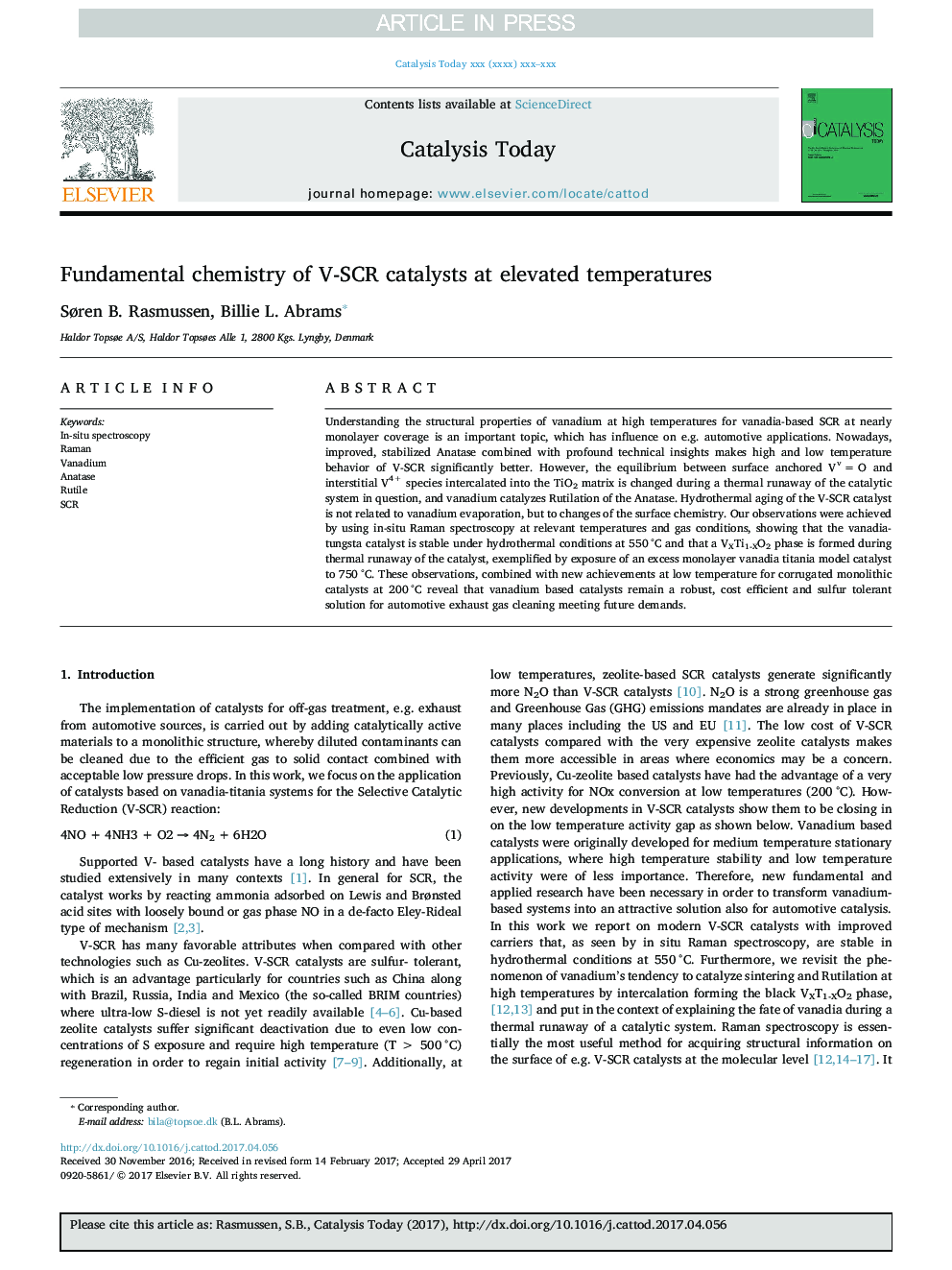| Article ID | Journal | Published Year | Pages | File Type |
|---|---|---|---|---|
| 6504990 | Catalysis Today | 2017 | 4 Pages |
Abstract
Understanding the structural properties of vanadium at high temperatures for vanadia-based SCR at nearly monolayer coverage is an important topic, which has influence on e.g. automotive applications. Nowadays, improved, stabilized Anatase combined with profound technical insights makes high and low temperature behavior of V-SCR significantly better. However, the equilibrium between surface anchored Vv = O and interstitial V4+ species intercalated into the TiO2 matrix is changed during a thermal runaway of the catalytic system in question, and vanadium catalyzes Rutilation of the Anatase. Hydrothermal aging of the V-SCR catalyst is not related to vanadium evaporation, but to changes of the surface chemistry. Our observations were achieved by using in-situ Raman spectroscopy at relevant temperatures and gas conditions, showing that the vanadia-tungsta catalyst is stable under hydrothermal conditions at 550 °C and that a VXTi1-XO2 phase is formed during thermal runaway of the catalyst, exemplified by exposure of an excess monolayer vanadia titania model catalyst to 750 °C. These observations, combined with new achievements at low temperature for corrugated monolithic catalysts at 200 °C reveal that vanadium based catalysts remain a robust, cost efficient and sulfur tolerant solution for automotive exhaust gas cleaning meeting future demands.
Related Topics
Physical Sciences and Engineering
Chemical Engineering
Catalysis
Authors
Søren B. Rasmussen, Billie L. Abrams,
